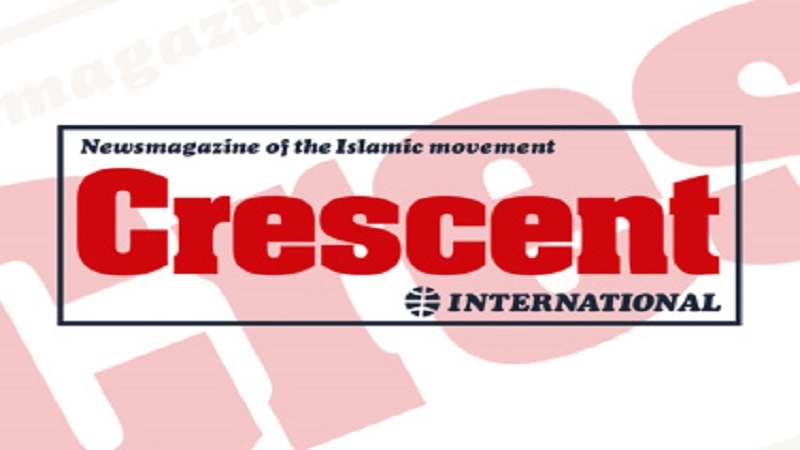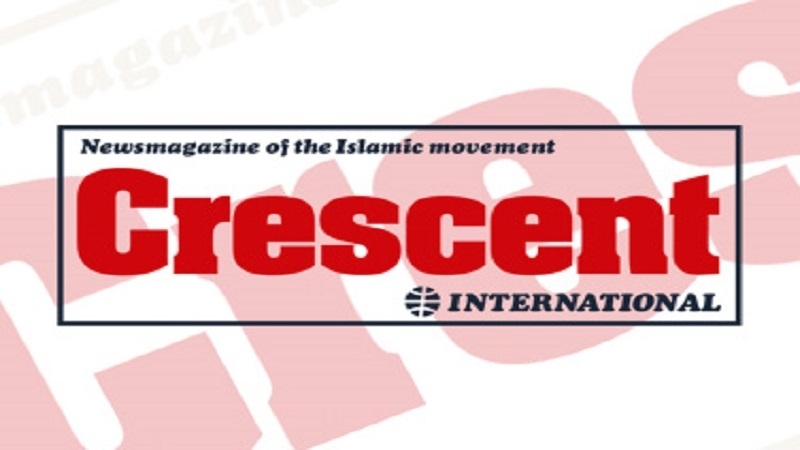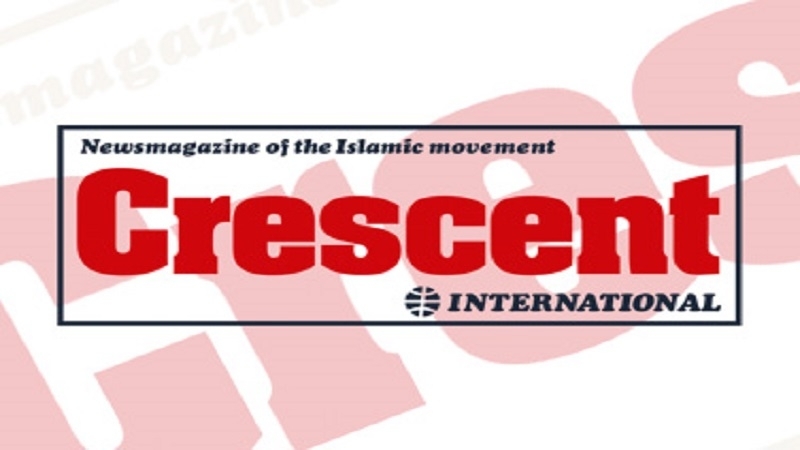Compelling case, based on Shari'ah, for removing the House of Saud
Developing Just LeadershipMohammed H. Siddiq
Sha'ban 12, 1419 1998-12-01
Book Review
by Mohammed H. Siddiq (Book Review, Crescent International Vol. 27, No. 19, Sha'ban, 1419)
SIYASA SHARIYYA: THE ANTHROPOLOGY OF INJUSTICE - THE CASE STUDY OF SAUDI KINGDOM By Ehsan Ehsanullah. Published by the Hajra Sanaullah Trust, Thornton Heath, Surrey, UK. 1994. pp.254. Pbk: UK 9.95.
This book challenges the legitimacy of the Saudi monarchy as well as attempts to draw attention to the unjust activities of the regime. Ehsanullah does not just attack the present forms of government throughout the Muslim world but rather proposes an alternative model of governance which calls for the unification of the Islamic community in adherence to the Qur’an. The author hypothesizes that the Ummah, or Muslim community, is in a state of crisis and that the main problem is the poor quality of leadership.
‘The irony is that today the Ummah (Muslim Community) is found to be either in a state of stagnation or, worse still, truly dissipated to the extent that it fails to unite against its tyrant, heretical and perfidious rulers. Today the Umma stands divided into two groups. One the Al-Saud oriented and two, the mainstream opposing the first’ (p.1).
Al-Saud oriented means the elite royal family of Saudi Arabia and those members, mercifully few in number, of the elite class who curry favour with this family. This elite class is heavily dependent on western support and has been corrupted by western influence as well as the decadence that characterizes these cultures.
Opposed to this oligarchy is what he identifies as the mainstream of Saudi society whose philosophy on everything from politics to religion is based on a strict interpretation of the Qur’an (p.16). Ehsanullah is unapologetic being called an Islamic fundamentalist. He believes the Qur’an provides guidance for re-uniting the Muslim world and removing tyrannical monarchs who claim legitimacy from the Qur’an but are in reality no more than clients of the west.
Ehsan Ehsanullah has spent many years traveling and working in Africa and Asia. By profession he is a civil engineer. His travels have allowed him to observe firsthand the tragic fragmentation of the Muslim world into western style nation-States (p.3). In 1946, he moved to England and obtained MA in Islamic Studies. As chairman of the Hajra Sanaullah Trust, and through years of study of Islam, Ehsanullah became convinced that the only redemption for the Muslim world was a return to the morals and the lifestyle prescribed by the Qur’an.
Ehsanullah’s fundamentalist philosophy serves as the basis for this case study. In the introduction, he lays out six assumptions based on the Qur’an that really anchor his political ideology. First, the ‘Rope of God’ is unbreakable yet flexible. The rope is the Qur’an which forms a link between the Ummah and God. Second, the Ummah can only find redemption through a unified effort to hold on to God’s rope. This engenders a lifestyle strictly prescribed by the Qur’an. To deviate from the word of God is to slip from the rope and lose redemption (p.9).
Third, the west encourages a pyramid scheme in which only a few hold power at the top because this is a means of diluting and controlling the Ummah. Fourth, there are still some gaps between the nation-States. Presumably, he believes the fundamentalists can fill this vacuum and work to undermine these States as a means of bringing the Islamic world together.
Fifth, the ‘Western Shield’ has the same profile as the one it imposes on the Muslim States. He seems to imply that these Muslim States are still carrying the mental and emotional baggage of being former colonies of the west. Sixth, God encompasses all they do. Ehsanullah implies that those elites who control governments in the Muslim world, such as the monarch of Saudi Arabia, cannot escape God’s judgement. At the same time he regards the efforts of the fundamentalists working against Al-Saud as sanctioned by God (p.9).
The author focuses his study on Saudi Arabia because he believes it holds the key to the Muslim world, encompassing, as it does, the two holy places of Islam. In addition, he argues that the Saudi monarchy offers a typical example of a secular government which invokes its right to rule because it claims it is sanctioned by the Qur’an. In Saudi Arabia’s case, this is specifically used as a crutch for dominating the Ummah through the monarch’s claim that he is Khadim al-Haramayn (keeper of the Two Holy Places) (p.16).
He divides his study into two parts to prove his theory.
Part one discusses Siyasa Shari’yya versus the Kingdom of Al-Saud. The author is setting up his model of the ideal society for Islam. His fundamental belief is that there can be no separation of government and religion or secular beliefs and morals. He writes: ‘Islam knows no distinction between ideal, morality and real legality which together form the core of Islam: Din ‘(p.21). Thus, the term Siyasa, which means politics, and Shari’ah, which means Islamic law, represents an amalgam of the two concepts.
The author traces the lineage of the Saudi dynasty and how each succeeding generation subverted the classic model of Siyasa Shari’yya by working to improve their own position and securing their grip on wealth and power rather than working for the betterment of the Ummah. He writes: ‘According to Al-Farsy, however, the Saudi rulers seem to follow the route, meaning the path of those who seek the good for themselves in this world’ (p. 53).
These tactics by the Saudi dynasty have accelerated in the twentieth-century. For example, he points to the 1902 murder of the Amir of Riyadh in a mosque by family members of the current Saudi ruler even though such killing is expressly forbidden by the Qur’an in Surah al-Hujarat (49: 9-10) (p.55). He asserts that the Saudi clan was far from repentant as they followed this terrible act up by calling for jihad as a means of masking their efforts to go after other rivals who could challenge their grab for power (p.55).
Ehsanullah also traces the dominance of western influence on the Saudi monarchy in chapter three of part one. He notes that this relationship began in the 1940s when then king Abdul Aziz ibn Saud joined the western alliance against Germany as a means of propping up his sagging family influence and fortunes. It seems that at this critical juncture, the family was rewarded by the United States which extended the lend lease programme.
According to author, this gave the Saudi royal family additional annual sum of $33 million over oil revenues as well as access to improved weapons, thus propping up the family’s security against rival clans (p. 59). He argues that this is a violation of Islamic law which prohibits abdicting protection of Muslims to a foreign entity (p. 60).
In part two Ehsanullah looks at three specific cases of injustices committed against the Ummah by Al-Saud. He strongly believes that the motivation for these injustices is greed (particularly after SOCAL struck oil in Bahrain in 1932, and which he notes with a touch of irony, was also the year the modern Kingdom of Saudi Arabia was proclaimed), a jealous desire to maintain control of power at all costs, and an infatuation with the western world’s decadent and immoral cultures.
The first injustice is the way Al-Saud has turned its back on the Palestinians, as well as a failure to support Saddam Husain’s efforts to reunite Kuwait with Iraq (they were once unified until partitioned by European powers in 1928). He criticises those Muslim States, led by Saudi Arabia, who, ‘once again were found gullible enough to part with their money, their resources, and dignity to total plundering [by the western coalition during the Gulf war]’ (p. 91).
Second, the Al-Saud has failed to support Islamic efforts to counter racist portrayals of Muslims in the western media such as Salman Rushdie’s Satanic Verses, and various slanderous articles in major western periodicals (p.102). He feels that Al-Saud has prostituted Islam’s reputation because it is afraid to take any action which could threaten its dependence on western support.
Finally, he accuses Al-Saud of the desecration of Haram Sharif and the murder of fellow Muslims who dared question their oppressive rule. He damns the royal family for engaging in decadence, which has threatened the very soul of Islam, in the strongest terms: ‘The destiny of the Prophet’s Arabia hangs precariously as before in the hands of the ignorant, self-centered, self-seeking, self-aggrandizing, self-contradicting, self-glazed and self-loving group whose acquisition is this worldly kingship’ (p.111).
In the first part of his study, the author describes the classic model for a thriving, vibrant world. It makes his study extremely effective because the reader now sees his analysis of all that is unjust about the Saudi royal family in terms of a positive effort by offering solutions to this malady rather than mere criticism or complaining.
He builds a compelling case for dramatic changes in Saudi Arabia’s society as well as a critical need for re-evaluation by Muslims in regards to the status and health of the Muslim world. The Islamic fundamentalists have voiced a strong argument for finding new solutions to Islam’s problems in the classic philosophies and texts of their religion. This book would help them reinforce these ideas.
Muslimedia: December 1-15, 1997




